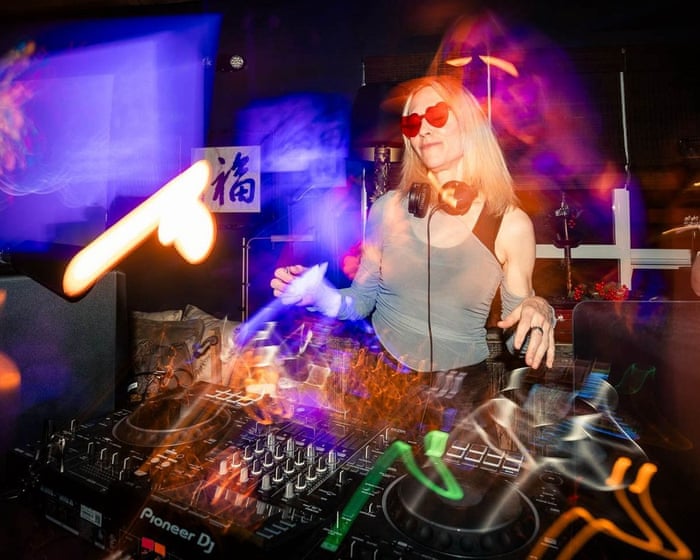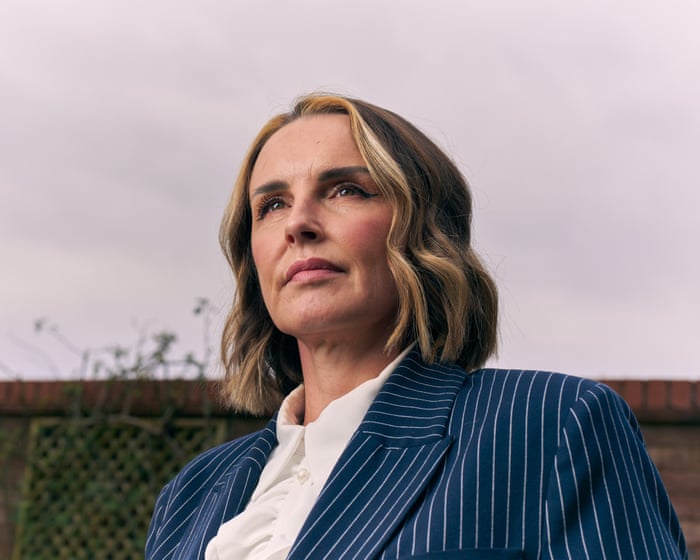Tina Woods was in a taxi when she suddenly felt the urge to dance. It was after midnight, and she and two friends were on their way home from a 60th birthday party. As they drove through southwest London, a bit tipsy from the evening, they passed Le Fez nightclub and decided they weren’t ready to call it a night. “We thought, let’s go dancing before we go to bed,” she recalls.
At 56, Woods hadn’t been clubbing since her twenties, but on the dance floor at Le Fez, she had what she describes as an epiphany. Moving to the beat, she felt a surge of pure joy—a powerful connection of mind, body, and soul. “It was like a lightning bolt,” she says. In that moment, she knew dancing and music would play a much larger role in her life than she had ever imagined.
Woods, who lives in London but grew up in Montreal, has always been active, enjoying travel, mountain climbing, and Zumba. Now, she started going clubbing again, sometimes with friends and sometimes with Nick, her husband of nearly 30 years.
She gravitated toward melodic techno and tech house, drawn to the beat, bass lines, and influences like Afrobeats and Latin rhythms. “I realized my brain responded to that music in an incredibly energizing way,” she says. “It made me feel alive.”
Woods studied genetics at Cornell University and later worked as a medical writer after moving to London in her twenties. She spent her career in healthcare until age 53 and now works as a consultant in health technology related to longevity, having even published a book on how artificial intelligence can help extend life.
Her experience on the dance floor sparked a connection to her professional interests. She began exploring the science behind dance and music’s neurochemistry, aiming to understand what promotes health, well-being, and potentially slows aging.
Since turning 56, Woods has tracked her biological age and claims it’s getting younger—one test at age 60 placed her at 35. Dancing also introduced her to new, intergenerational friendships, like with Yukari, an aspiring DJ she met on a dance floor in Japan during a conference.
However, at 59, severe bunions caused unbearable pain, even dislocating some of her toes. Faced with surgery and a four- to six-month recovery, Woods focused on what mattered most to her: staying mobile and energetic. Always someone who struggles to relax, she looked for a silver lining and decided to learn how to mix music.
She had the surgery in December 2023, just before Christmas. Her three sons gave her DJ equipment as a gift, and she began learning during her recovery.
Once mobile again, she and her husband were on their way to a gig in east London when they stopped for a drink at Love Shack. There, they discovered a hidden room under railway arches hosting a vibrant, pulsating party. Woods knew instantly it was the perfect place for her DJ debut.
She reached out to Yukari, and together they decided to organize an event. “Before we knew it, more than 200 people had signed up,” Woods says. They called it the Longevity Rave.
Now, Woods DJs once a month, having performed in cities like Los Angeles, San Francisco, Miami, and London. Her events attract people of all ages, and she feels she’s rediscovering herself in a whole new way.”Psychologically, emotionally, sexually—everything that defines me as a woman,” she says.
She has no plans to end her consultancy work: “DJing isn’t a career. It’s more of a calling.” But her world has become “more vivid, more electric… There are many successful DJs well into their 60s and 70s. So who knows? I’m just following a path and seeing where it leads.”
Live Longer With AI: How Artificial Intelligence Is Helping Us Extend Our Healthspan and Live Better Too by Tina Woods is published by Packt.
Tell us: Has your life taken a new direction after turning 60?
Frequently Asked Questions
Of course Here is a list of FAQs about transitioning from dancing to DJing after bunion surgery with clear and concise answers
General Beginner Questions
Q What made you switch from dancing to DJing
A After my bunion surgery I couldnt dance for a long time I still loved music and being part of the scene so DJing was a perfect way to stay involved from behind the decks instead of on the dance floor
Q Isnt DJing hard on your feet
A It can be as youre standing for long periods However its much less impact than dancing I wear supportive shoes use antifatigue mats and can take quick sitting breaks which wasnt possible while performing as a dancer
Q Do I need to know how to play an instrument to be a DJ
A Not at all While musical knowledge helps DJing is primarily about song selection beatmatching and creating a smooth flow of music to keep people dancing
Q Whats the most basic gear I need to start
A You can start very simply with just a laptop and DJ software Many beginners get a small affordable DJ controller that connects to their computer which gives you physical knobs and faders to mix with
Q How do you find music to play
A I subscribe to record pools which are services that provide DJs with huge libraries of music for a monthly fee I also regularly browse digital music stores and listen to new releases on streaming platforms
Practical Advanced Questions
Q How did you learn to DJ Did you take classes
A I used a combination of free online tutorials on YouTube practiced relentlessly at home and learned a lot by just listening critically to other DJs sets to understand how they build energy and transition between songs
Q Whats the biggest challenge you faced when starting
A Overcoming the technical learning curve was tough at firstthings like beatmatching and phrasing The bigger challenge was developing the confidence to play for a live audience and reading the crowds energy
Q How is reading a crowd as a DJ similar to or different from performing as a dancer
A Its very similar As a dancer you feel the music physically and express the energy As a DJ




